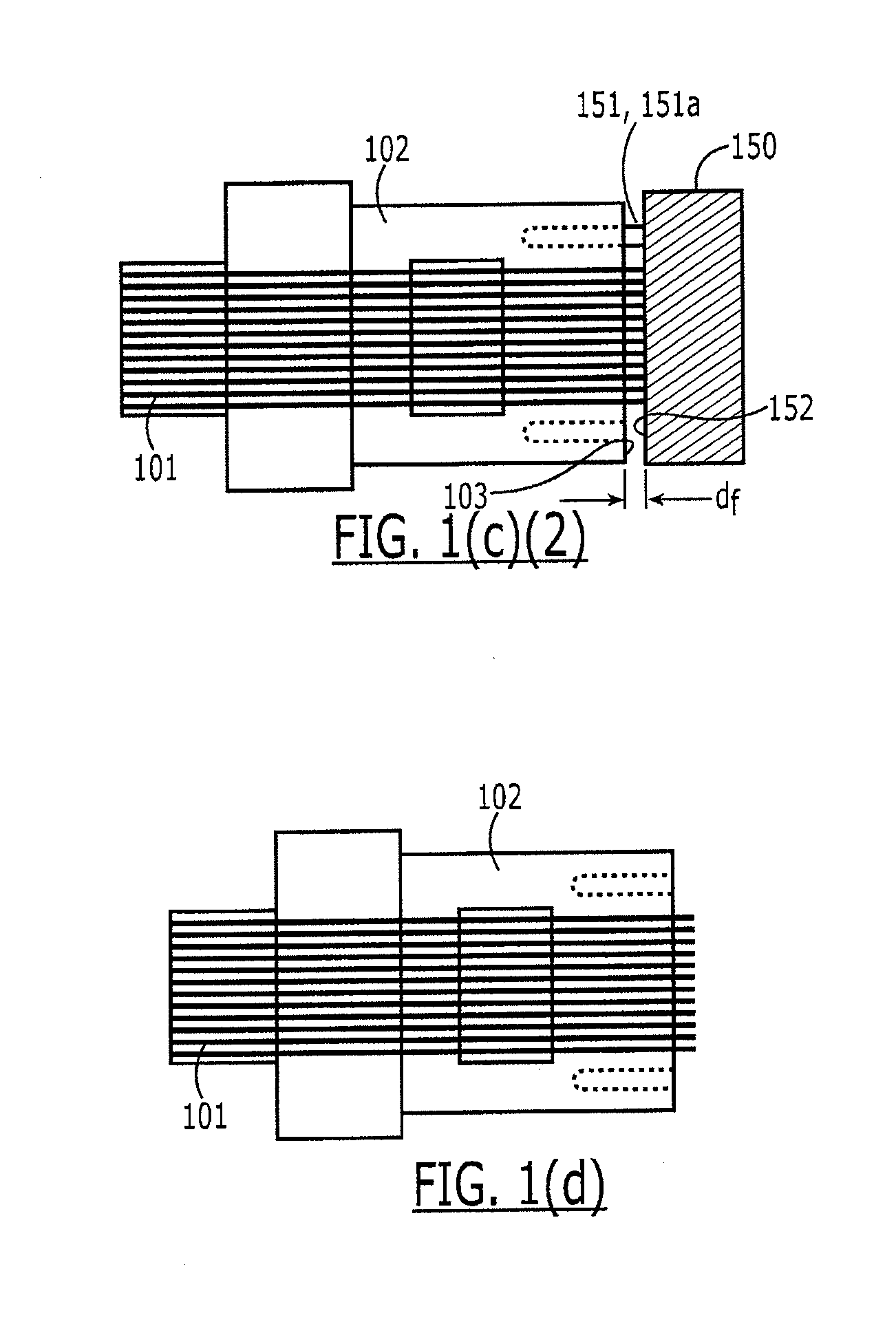Ferrule assembly process
a technology of ferrules and assembly processes, applied in the field of manufacturing a ferrule assembly, can solve the problems of difficult, if not impossible, to bring the end face of the fiber housed therein into physical contact with the optical path of the mating component, and it is difficult to effect optical coupling with all of the fibers, so as to facilitate physical contact and facilitate the effect of fiber protrusion
- Summary
- Abstract
- Description
- Claims
- Application Information
AI Technical Summary
Benefits of technology
Problems solved by technology
Method used
Image
Examples
Embodiment Construction
[0018]Referring to FIGS. 1(a)-(d), a process for preparing terminated fibers according to one embodiment of the present invention is shown. (Although this description considers a multifiber ferrule in detail, it should be understood that the invention may be practiced on single fiber ferrules as well.) As shown schematically in FIG. 1(a), multiple fibers 101 are positioned in a ferrule 102 having a ferrule end face 103 and at least one first alignment member 104 such that a portion 105 of each of the fibers 101 extends beyond the ferrule end face 103. The portion of the fibers 101 extending from the ferrule end face 103 is then cleaved to form cleaved fiber ends 106 as shown in FIG. 1(b). Next, as shown in FIG. 1(c), a second alignment member 151 of a tool 150 is interengaged with the first alignment member 104 such that a register surface 152 of the tool 150 is aligned with the ferrule 102. The cleaved fiber end faces 106 are then registered against the register surface 152, thereb...
PUM
| Property | Measurement | Unit |
|---|---|---|
| angle | aaaaa | aaaaa |
| peak power | aaaaa | aaaaa |
| pulse length | aaaaa | aaaaa |
Abstract
Description
Claims
Application Information
 Login to View More
Login to View More - R&D
- Intellectual Property
- Life Sciences
- Materials
- Tech Scout
- Unparalleled Data Quality
- Higher Quality Content
- 60% Fewer Hallucinations
Browse by: Latest US Patents, China's latest patents, Technical Efficacy Thesaurus, Application Domain, Technology Topic, Popular Technical Reports.
© 2025 PatSnap. All rights reserved.Legal|Privacy policy|Modern Slavery Act Transparency Statement|Sitemap|About US| Contact US: help@patsnap.com



